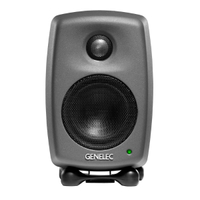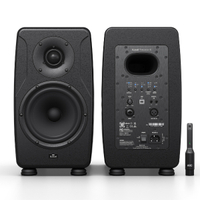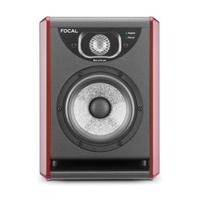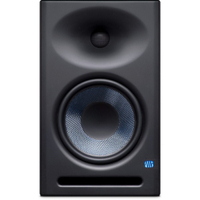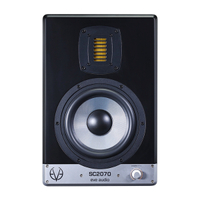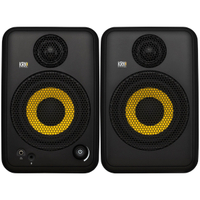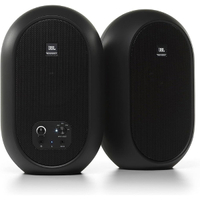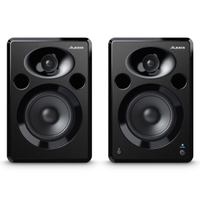Best studio monitors 2025: Studio speakers for musicians and producers on any budget
My comprehensive guide to the best studio monitor speakers for home studio recording, whether you’re a beginner or pro producer
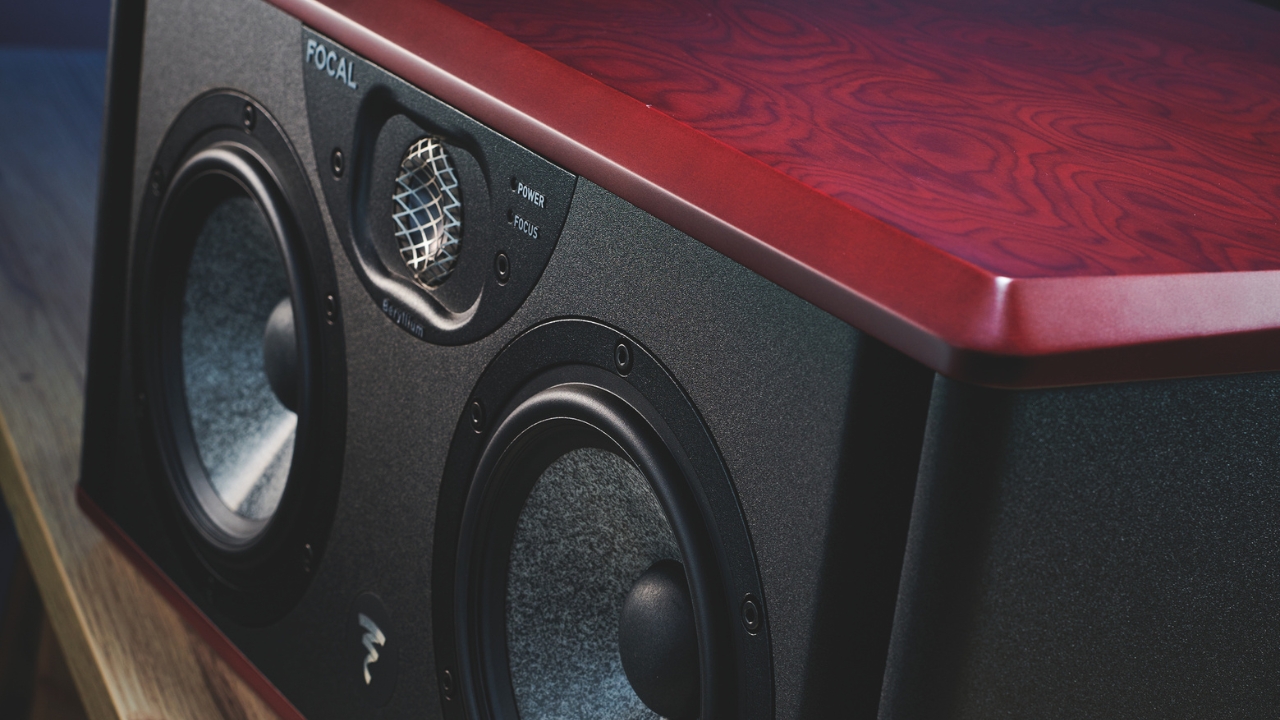
To be totally honest with you, there's no such thing as a best studio monitor. The best studio monitors for you are the ones you know intimately, or in this case, the ones you're about to buy. The true art of mixing is in knowing your monitoring as well as you possibly can, and for that, there's no substitute other than time - and excellent room treatment.
There might be any number of reasons you're buying a new set of studio monitors, and it's a daunting task, as well as a decision you'll want to get right the first time. To make things easier for you, I've ordered my top picks by use case, so you can hone in on the right set for your particular needs. Between myself and the MusicRadar team, we've personally tested the vast majority of the studio monitors on this list too (reviews are on the way for the others), putting them through their paces with a host of reference mixes and using them just as we would in our own studios.
If you're looking for the best of the bunch, I'd highly recommend the Focal Shape 65, which delivers superb top-end clarity and has plenty of features for tweaking to your particular room shape and size. If you're not so flush with cash don't worry though - you can still get a great set of monitors on a budget. I'd go for the M-Audio Forty Sixty, which will give you superb performance for a relatively low price.
If you're not sure how to tell your woofers from your tweeters, then make sure to have a look at our in-depth FAQs, which has loads of common questions answered by expert musicians and mixers here at MusicRadar. I've also curated a glossary of key terms if you find yourself confused by any of the lingo in this guide. If you already know your frequency range from your frequency response, then scroll on down for our top studio monitors available today.
My top picks
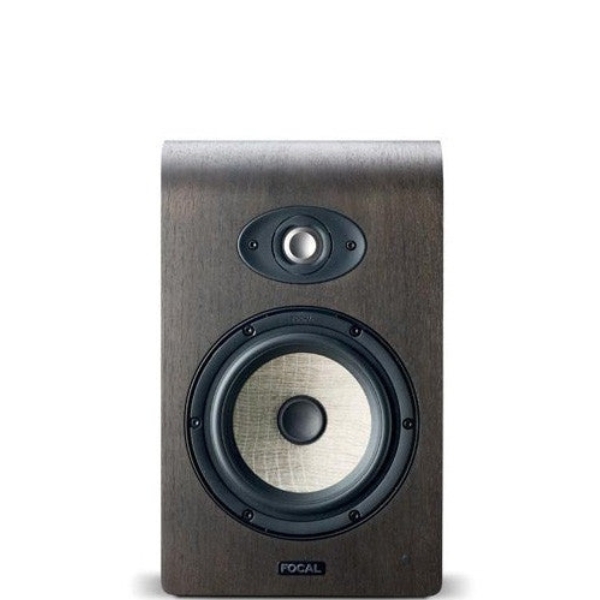
If you're looking to step up from a less expensive set of studio monitors, I found the Focal Shape 65 will make your mixing decisions far easier and get you much better results.

The replacement for the BX-Series that used to occupy this list, the M-Audio Forty Sixty has a 6.5" tweeter for plenty of detail, while remaining easy to use and budget-friendly.
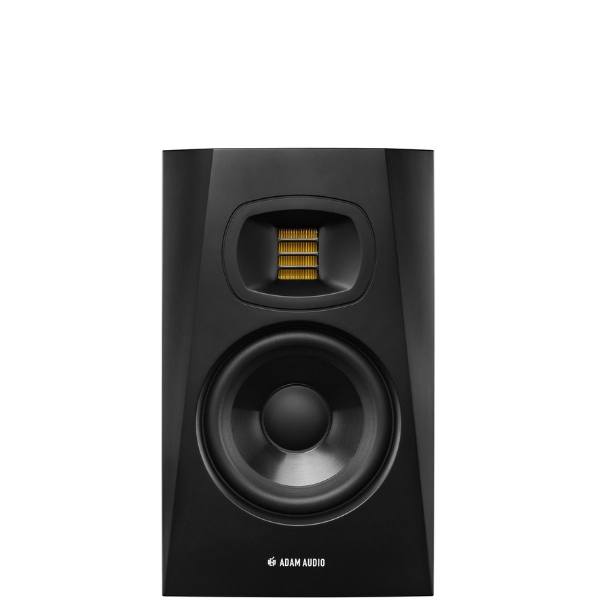
You can get a surprisingly good pair of monitors below the $500 mark these days, so if you're on a budget, I'd go for the Adam Audio T5V. Their precise top end makes them great for mixing.
Best overall
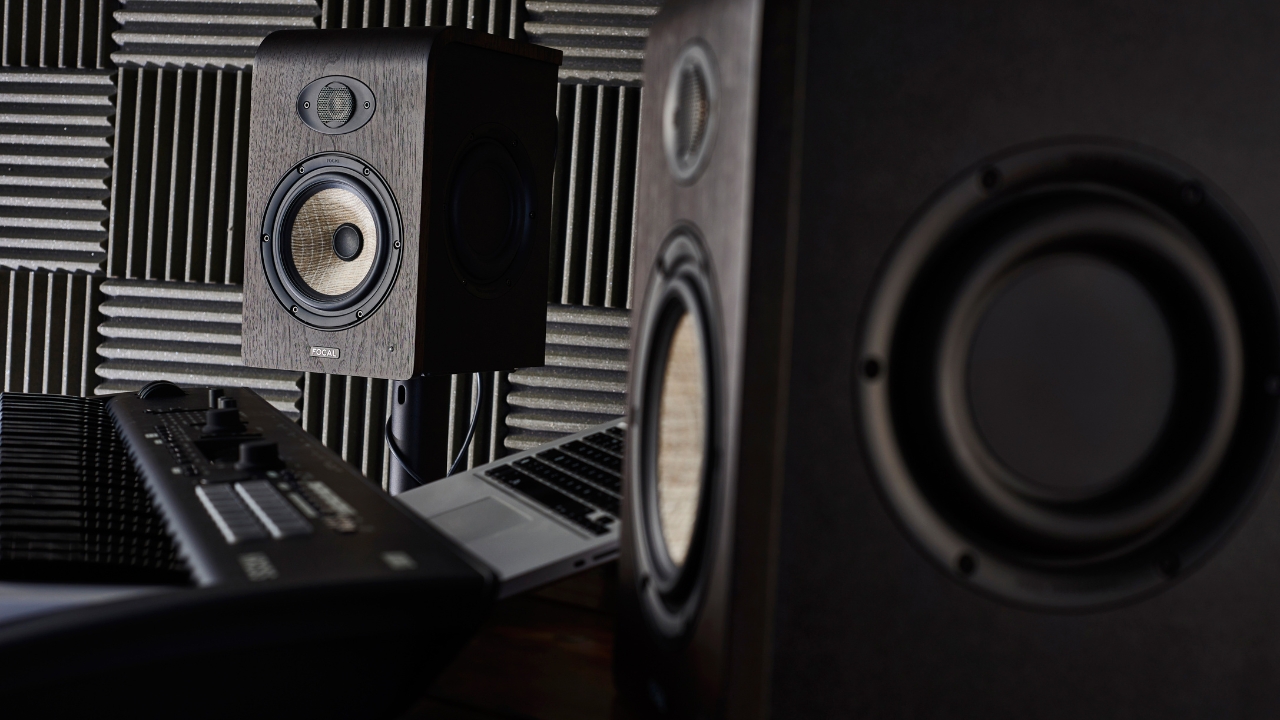
Specifications
Reasons to buy
Reasons to avoid
✅ Buy if you want to upgrade your current monitors: If you already have a set of studio monitors and are looking for something better, these are a fantastic high-end option.
❌ Avoid if you don't want automatic bypass: The automatic bypass function can be annoying in longer mix sessions, as your speakers automatically turn off after 30 minutes of inactivity.
Overview: Once you've got more experience mixing, you tend to find that you prefer the sound of a particular manufacturer's monitor, and I'm a big fan of the sound of Focal monitors. Available in 40, 50, and 65 flavours, the latter of which I'm reviewing here, the Shapes, from Focal, now sit between their budget-friendly Alpha series and the Solo6 Be - another 6.5" two-way monitor - in terms of price.
Usability: Interestingly, the Shapes are non-ported, with dual 6.5" passive radiators (one on each side of the monitor). This means you can only place them vertically, but honestly, I prefer the wider sweet spot you get this way, especially when using studio monitors at home.
Aesthetically, the Shapes are an interesting departure from Focal’s other designs. The main speaker cabinet is black-painted MDF with a luxurious walnut veneer, appearing less ‘studio spaceship’ and more ‘hi-connoisseur’ – in fact, they’d look just as at home in a domestic cinema setup as in a production environment. I really love the four spikes on the bottom for decoupling or angling the speakers to match your setup, too.
Sound: They're what I call a 'mid-forward' speaker, and the frequency balance is, in a word, exceptional. The translation to other systems is fantastic, and unlike some of the more clinical monitors available, these are really nice for general listening, particularly that sparkly high-end.

"All in all, the Shape 65s might even be the best-sounding and effective monitor speakers in this price range. They offer superb value. Okay, that sub-bass response won’t take the air out your lungs but for smaller, less-treated home studio setups this could be all important. What the 65s do really well is guide your towards better mixes that sound just as they should through other systems. For serious monitor upgrades, I'd definitely recommend test-driving the Shape 65s."
Read more: Focal Shape 65 review
Best budget
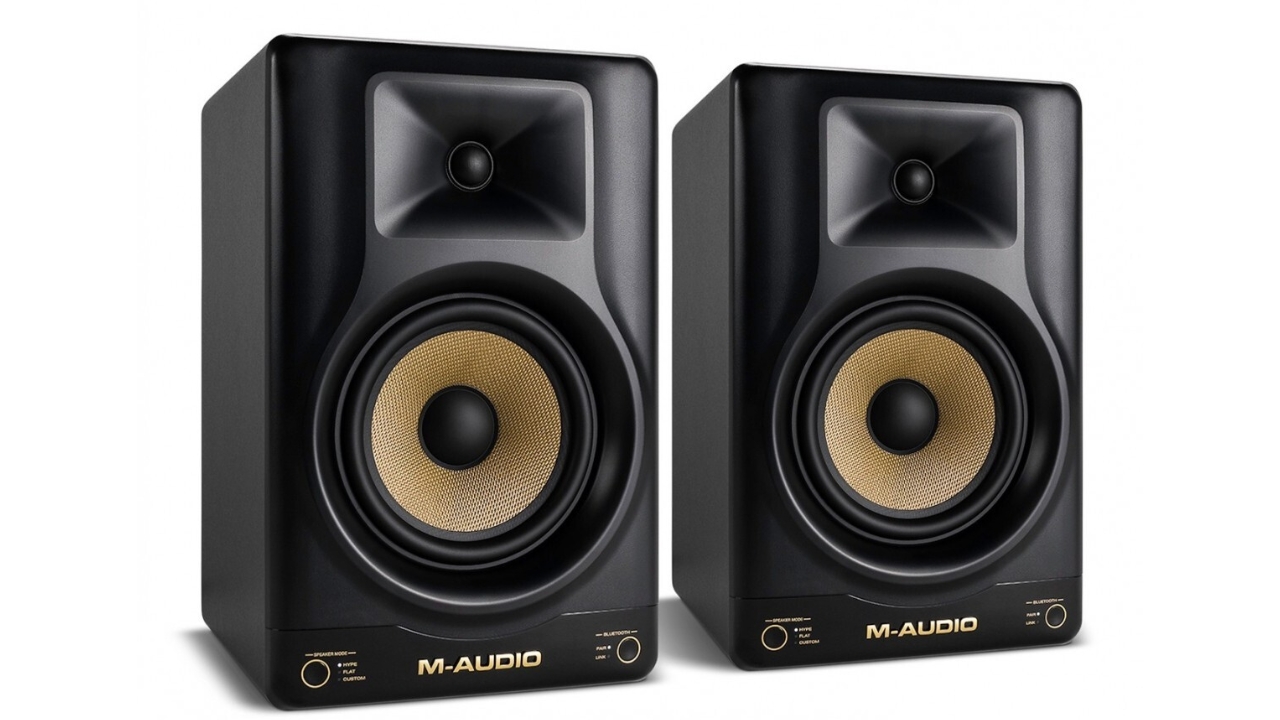
2. M-Audio Forty Sixty
Our expert review:
Specifications
Reasons to buy
Reasons to avoid
✅ Buy if you want a budget studio monitor: A pair of these monitors costs less than most single monitors from other manufacturers, making them great for those on a budget.
❌ Avoid for pro-mixing work: These monitors are great value, but decidedly beginner-level when it comes to mixing detail.
Overview: M-Audio’s new Forty Sixty studio monitors are, in a word, fun. These monitors serve to replace the brand’s long-standing BX-series, the M-Audio BX4s having at one point topped this very list. The new Forty series represents a refreshing step in a new direction, which melds creator and listener in a hugely versatile beginner-friendly format.
Usability: The Forty Sixty continues in its hybridity with Bluetooth 5.3 connectivity, which governs both the streaming of music and the tweaking of digital EQs via a proprietary app. M-Audio has done something intriguing with the Forty Sixty, marrying consumer hi-fi and pro audio in an affordable studio monitor package. And I love it.
Sound: The Forty Sixty has a relatively large 6.5” Kevlar woofer, allowing for some impressive extension in the low end, and a decent amount of mid-range body besides. Digital crossover and EQ enable you to make the most of this extended response, the flashiest expression of which is the front-facing ‘hype’ button – which switches the Forty Sixty from a flat reference monitor to a bass-boosted hi-fi hot-rod.
Best under $500
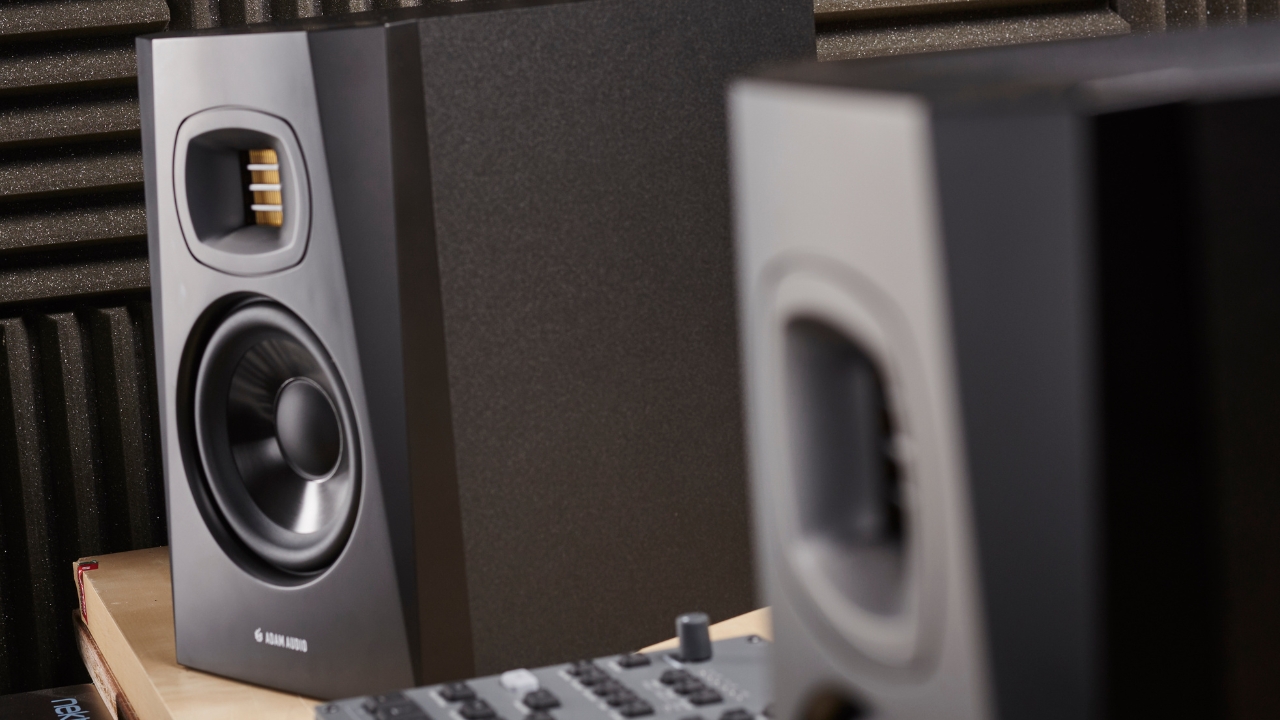
Specifications
Reasons to buy
Reasons to avoid
✅ Buy if you want great monitoring for less than $500: Great for beginners or those with a bit more experience on a tighter budget, these monitors from Adam Audio deliver fantastic monitoring that won't break the bank.
❌ Avoid if you need your monitors close to a wall: With a rear ring reflex port, you'll need at least 25-30cm distance between the back of these monitors and the nearest wall for best performance.
Overview: One of the most affordable Adam monitors to date, the T5V is built around a 5-inch woofer and Adam’s U-ART (Unique Accelerated Ribbon Tweeter) tweeter. This Class-D powered two-way design with rear-ring bass reflex is the smaller of the new T Series designs.
Usability: The rear ring reflex port means that they're best used away from your back wall, but there is an EQ that offers some flexibility here. With high frequency and low frequency dials you can tune them into your room nicely, making adjustments to your particular surroundings nice and easy.
They're quite narrow, but also longer than some of the others on this list which is something to note for your own setup. Overall, they feel pretty compact, and definitely sized for use in a home studio. I also like that you have balanced XLR connections and an unbalanced phono connection too.
Sounds: Sonically, the top-end is very well-tuned, while the HPS waveguide delivers a broad horizontal sweet spot. This contributes greatly to the overall imaging and separation, which is excellent.
The low mid-range frequencies could be more prominent, but this certainly isn't a deal-breaker, and by setting the LF EQ to -2dB I achieved a much better result. Adam’s desire is to make the T5V your first Adam monitor, and judging by what we’ve heard here, it could easily make you a fan for life.
Read our full Adam Audio T5V review

"I thought the EQ sounded very gentle, and I reckon we could get used to the T5V in any of the three HF settings, indicating that, to my ears, the overall top end is very well tuned. The HPS waveguide delivers a broad horizontal sweet spot but is more restricted vertically. This contributes greatly to the overall imaging and separation, which is excellent. Just be aware that the sweet spot is a bit more restricted in the vertical direction."
Read more: Adam Audio T5V review
Best for home studio
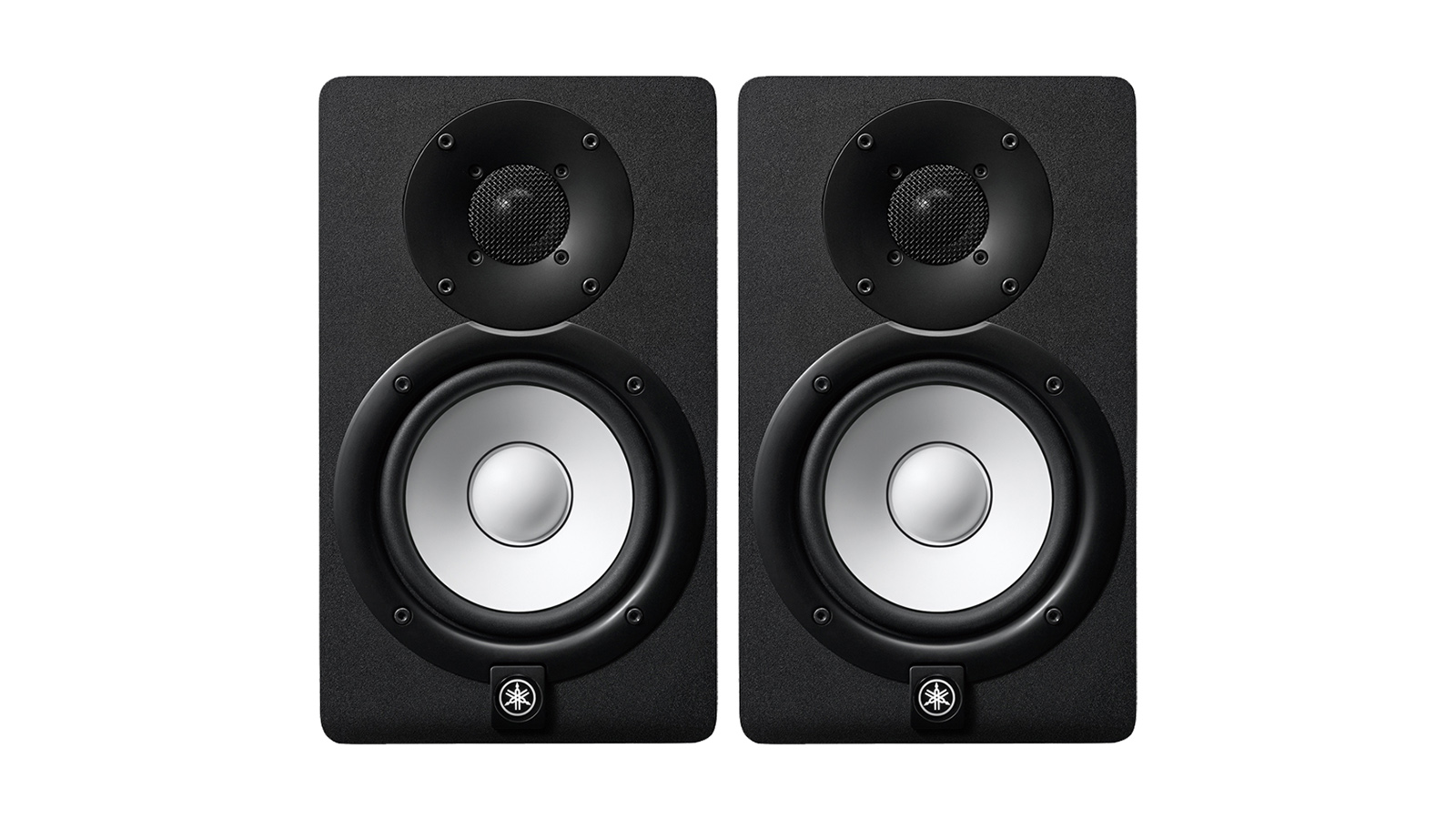
Specifications
Reasons to buy
Reasons to avoid
✅ Buy if you want an honest pair of monitors: Doing little to hype your sounds, the HS5s deliver an honest picture of your mix, meaning if they sound good here they'll sound good anywhere.
❌ Avoid if you need big low-end: Due to the size these don't deliver quite as much low end as other, larger monitors, so look elsewhere if you like things bass-heavy.
Overview: Some of the most popular studio monitors around, the Yamaha HS5s are a great choice for mixing duties due to their reliably honest sound reproduction. They're incredible value for money and perfect for those who want to go down the route of mixing and producing music.
Usability: The Yamaha HS5 series are reference speakers that are built solely with mixing and monitoring in mind. There's no Bluetooth or graphic EQ, and room correction is basic at best. For sheer accuracy, however, they're hard to beat at this price range. Get your mix right on these and it'll sound fantastic anywhere.
Sounds: The famous story about the old Yamaha NS10 studio monitors, which these are based upon, was that they were chosen not because they sounded great, but because they didn't. The theory is that if you could mix a track to sound good on them, you could be confident it would sound good anywhere, and the same applies to the HS5. They won't flatter your mixes in the slightest.
I've been using the HS5s for a good few years now in my home studio, and despite it not being the optimal setup, I've found my mixes sound fantastic when I take them to a professional mixing room and listen back on much more expensive monitoring. It takes a while to learn them, but that's effort well spent.

"The imaging, transient response, high-frequency detail, and depth all sounded superb. But the hallmarks of this monitor, and where it bests the competition, are its tight upper-bass and open low-midrange reproduction. Whereas most monitors sound muddy when placed on workstation shelves, the HS5 sounds extraordinarily clear. I won’t mince words: The HS5 is the best-sounding monitor I’ve heard in its price range by a mile."
Read more: Yamaha HS5 review
Best for electronic production
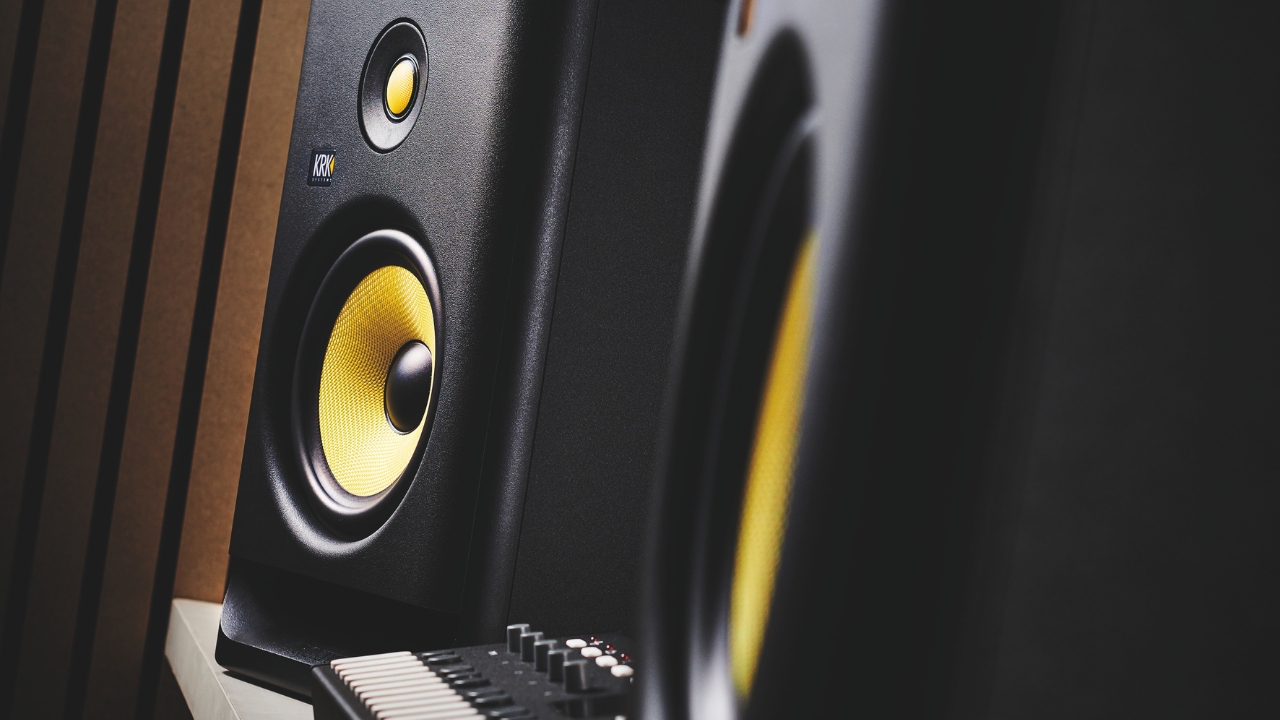
Specifications
Reasons to buy
Reasons to avoid
✅ Buy if you want to make electronic music: The bass response on these monitors makes them great for low-end heavy genres and electronic music.
❌ Avoid if you're mixing rock: Non-EDM-based musicians may find these speakers a little bit too hyped here for more traditional instrumentation.
Overview: If you've ever stepped foot inside the studio domain of an electronic music producer, the chances are you're familiar with the famous yellow speaker cones of KRK. The Rokit series - now in its fifth generation - has a selection of neat features which make it worthy of note.
Usability: The G5 range builds on the strengths of the G4 range, which was among the first monitor series at this price bracket to include a graphic EQ function on the speaker itself; the G5 adds three EQ modes, to tailor the voice of the speakers depending on the task at hand.
They'll fit comfortably on a desktop, with the size only marginally bigger than it's predecessor which had a six-inch tweeter. There's also a high-density foam pad on the bottom of the monitors to help them grip the surface and provide some isolation.
Sounds: The in-built digital signal processing (DSP) remains impressive, and a new improved tweeter extends the high-end response, making for a plussed-up iteration of the same great budget studio monitor. I thought very fondly of the G4 series that came before, and I think just as fondly of these retooled successors.

"The Rokit 5 Generation Five is ideal for smaller rooms and spaces and also suitable for surround applications. The new soft dome tweeter adds finesse to the top end and although there is plenty of scope to apply EQ, we really didn’t feel the need to move that far from the factory flat setting, which is very encouraging."
Read more: KRK Rokit 5 G5 review
Best compact
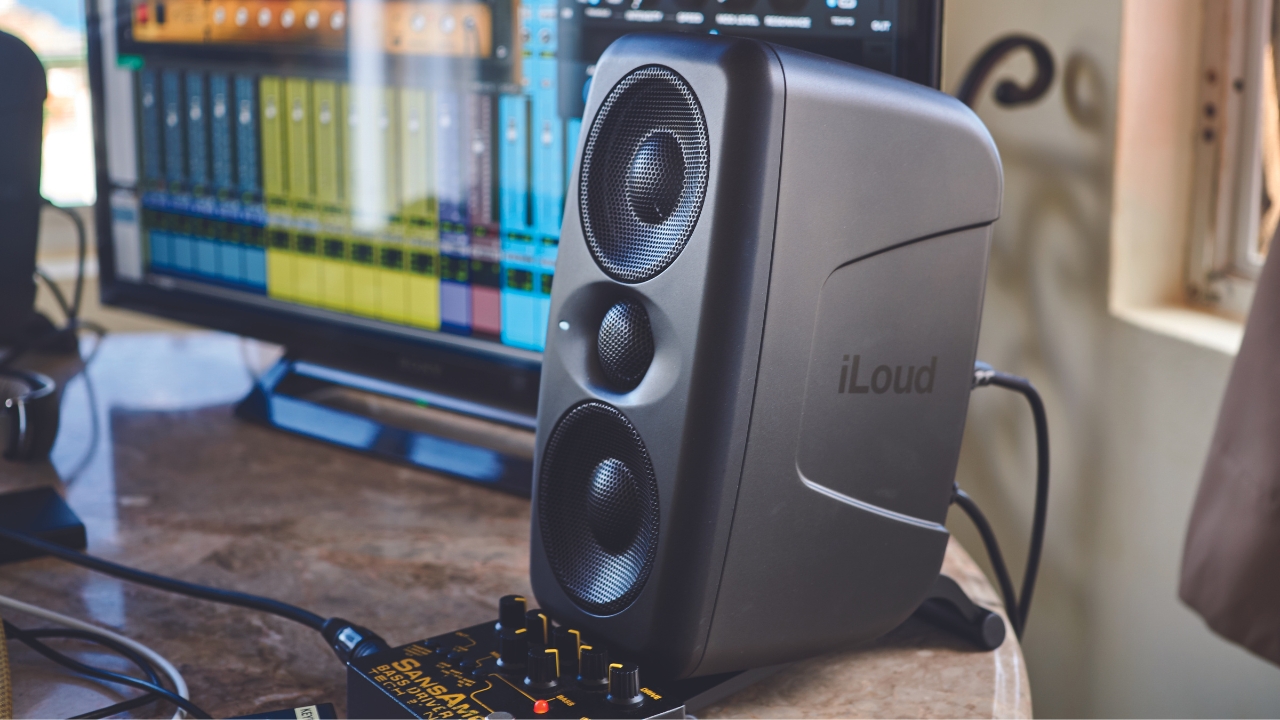
Specifications
Reasons to buy
Reasons to avoid
✅ Buy if you need a compact studio monitor: The small size of these monitors means they'll fit in pretty much any setup, no matter how small.
❌ Avoid if you're in a big room: Conversely, the small size means they won't fill out as much if you're mixing in a larger room.
Overview: IK’s latest addition to its growing monitor range, the iLoud MTMs are crammed with tech that belies their relatively low price point. The ‘MTM’ bit refers to the D’Appolito configuration, which, in this case, places a 1” tweeter in between two 3.5” mid-range woofers, with a bass reflex port around the back.
Usability: Everything is DSP-controlled and they can be calibrated to suit your room courtesy of IK’s proprietary ARC calibration system, which is built right into the speakers and the measurement mic comes bundled as part of the package.
For those with limited desk space, or seeking a surgical secondary pair to their main ‘fun’ monitors, the iLoud MTM really is a truly incredible solution.
Sounds: The MTMs are clinical and brutally ‘honest’ and take imaging to a level that we’d expect to hear from monitors costing three times as much. Subtle mid/high details that previously went unnoticed become perfectly audible, making corrective targeting of individual elements within the mix almost supernaturally easy. Low-end solidity and control are remarkable for a speaker of this size, too, and they never really seem to get fatiguing.

"The iLoud MTM is a remarkable feat of audio engineering in bringing such a surgical level of detail in such a small format. It makes an ideal choice for those with crowded desks, and those who want to dive deeper into their mix."
Read more: IK Multimedia iLoud MTM review
Best for beginners
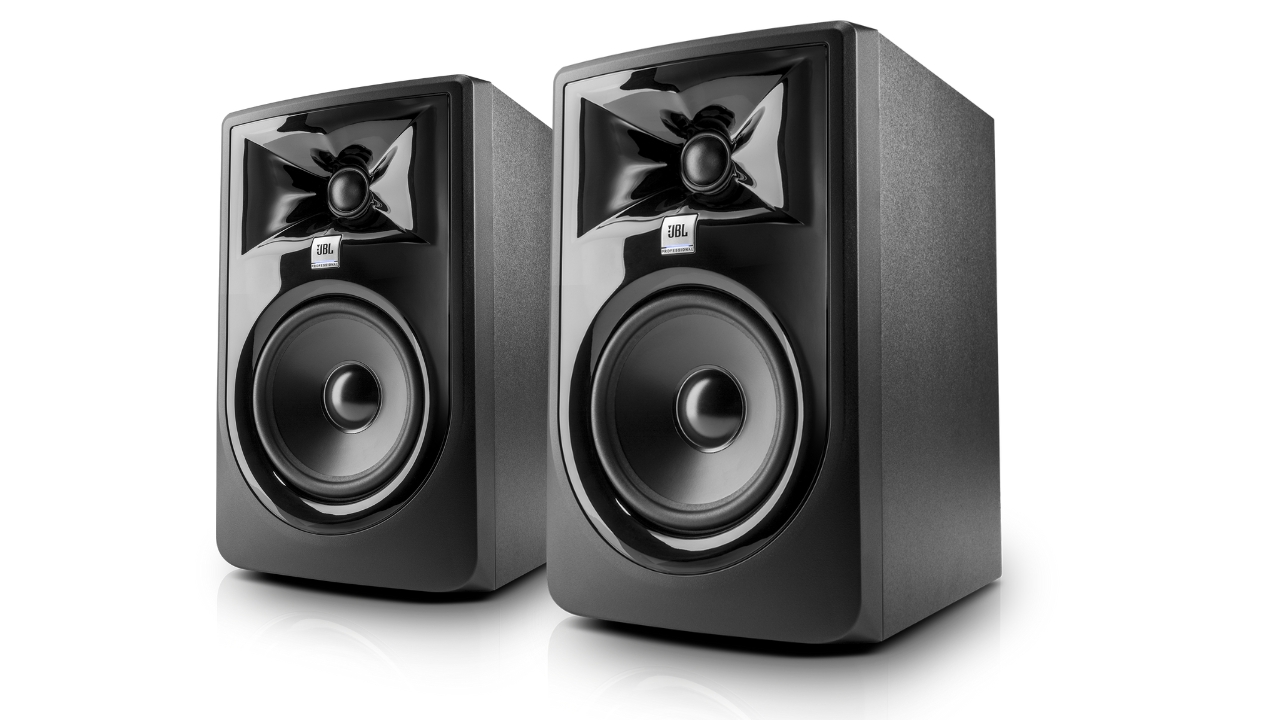
7. JBL 305P MkII
Our expert review:
Specifications
Reasons to buy
Reasons to avoid
✅ Buy if you want your first set of monitors: Perfect for beginners, these monitors provide excellent sound, ease of use, and a wide sweet spot making them great for budding mix engineers.
❌ Avoid if you need low-end detail: As is the case with smaller speakers, the size means you'll need to resort to using headphones to examine the low end in detail.
Overview: If you’re looking to get your first set of studio monitors then I'd highly recommend the JBL 305P MkII. As well as being fantastic value for money they deliver articulate sound that’s perfect to get beginners mixing their own music.
Usability: Handy EQ controls on the back allow you to adjust the sound to your setup, so you can trim the bass if the speakers are placed on a desktop, or close to a wall. On a pair of stands, we found there was a nice balance that didn’t require much tweaking, another tick in the box that makes these great for beginner mixers.
Sound: I found the sweet spot surprisingly wide considering the price point, which means you’ll get a great listening experience even if your setup isn’t quite perfect. They’re nicely balanced between low-end and high frequencies too, making them great for long periods of listening.
Best professional

Specifications
Reasons to buy
Reasons to avoid
✅ Buy if you have a properly treated studio space: These are professional-level monitors designed for use in properly treated spaces, perfect if you've just moved to a bespoke studio space.
❌ Avoid if you're mixing at home: These speakers are not only huge, but they're loud too and won't do well in small or badly treated home studios.
Overview: If you've worked hard and long enough to get a dedicated studio space, you're going to need a different level of studio monitor from most of the choices on this list. Enter the Focal ST6 Twin6, a professional-level studio monitor for top-quality sound.
Usability: These aren't really for use at home, unless you have a massive, well-treated space. At half a metre wide and weighing in at 22kg each, these are beasty speakers that deliver a gigantic soundstage to go with their hefty size. With these positioned correctly the stereo width is absolutely phenomenal, delivering super-wide and multi-dimensional tones that will blow most other monitors out of the water.
Sound: They deliver super smooth bass, sparkly top end, and plenty of mid-range detail without ever sounding harsh or boomy. You can actually make them sound worse however, thanks to 'Focus' mode. Hitting this switch moves the monitors from 2.5-way to 1-way, significantly decreasing the high quality so you can hear how your mixes will translate on smaller, poorer quality speakers.
With its combination of mix-friendly features, incredible build quality, and of course, that superlative sound, the Focal ST6 Twin6 is a AAA+ grade studio monitor for pro mixing engineers.

"Swapping our everyday 2-way monitors for a pair of 2.5-way Twin6s, the difference is immediately apparent. Placed horizontally, it’s the breadth of the soundstage that’s initially so striking. The stereo imaging is so much wider, reproducing a grander, multi-dimensional sound that puts our usual monitors to shame."
Read more: Focal ST6 Twin6 review
Best for guitar
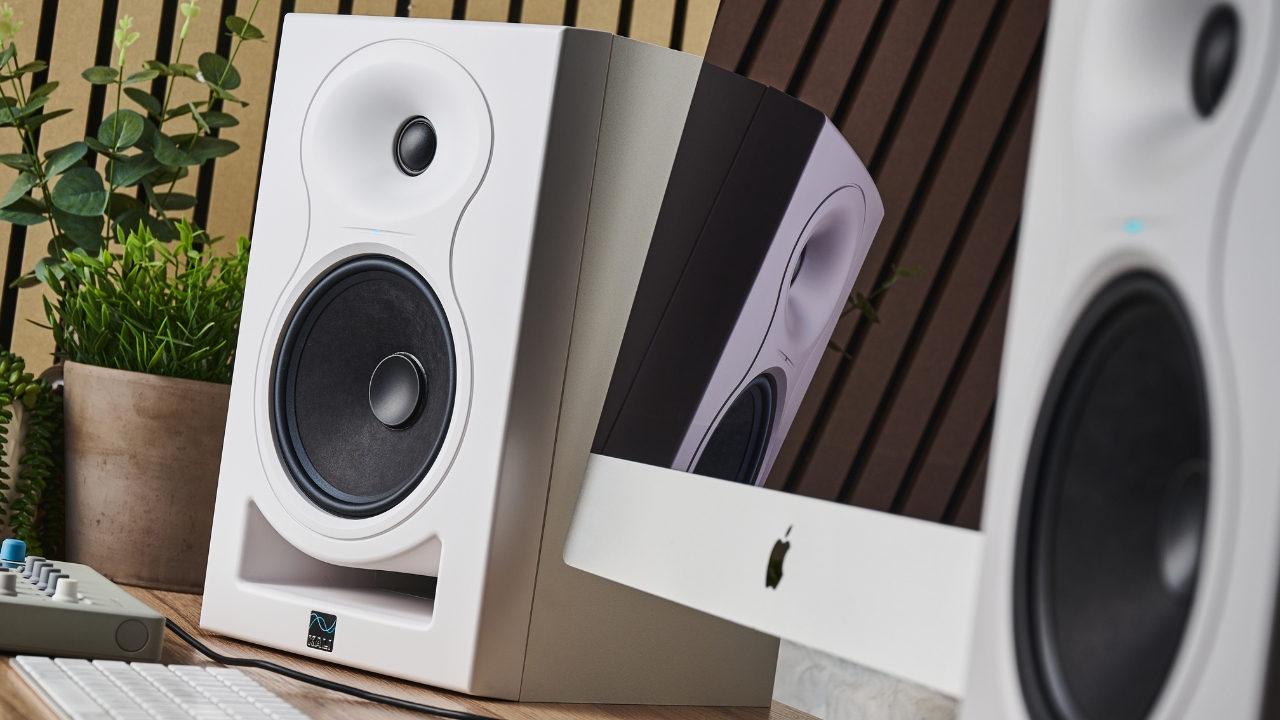
Specifications
Reasons to buy
Reasons to avoid
✅ Buy if you want to play your amp modeller through a set of studio monitors: Great value and packing excellent sound, these monitors are great for pairing with a modern amp modeller.
❌ Avoid if you like a lot of low-end: The smaller size means they don't push out as much low-end as some of the larger speakers that are available.
Overview: Loads of guitarists are turning to studio monitors to pair with an amp modeller for at-home practice, as they allow you to take advantage of a full-range sound that a traditional guitar amp or cab won’t give you. If you want to do this, the Kali Audio LP-6 2nd Wave offers excellent value and easy set-up, making them perfect for guitar players.
Usability: One of our favourite features is the dip switches on the rear and the handy diagrams that go with them. Each shows a possible setup of the speakers, and the corresponding settings you should set the dip switches to, allowing you to get optimal sound whether you need to place them against a wall, up on speaker stands, or on a desktop.
Sounds: They feature a smooth and detailed response with an excellent stereo spread that will let you take advantage of stereo delays and reverbs. The bass extension is not quite as good as what you’d get on a larger speaker, but it is plenty for playing guitar and bass at home. We found them very comfortable for long listening periods too.

"My test pair were remarkably low on self-noise – you really can work up close to these monitors. Similarly, forward-facing ports often get a bad rap for introducing air turbulence noise but we didn’t experience this or marked bass compression. The LP-6’s response curve is pretty flat, with a slight dip at 700- 900Hz, which is why I heard little character, just an accurate, transparent tone. Exactly what I look for in mixing."
Read more: Kali Audio LP-6 2nd Wave review
Spec comparison
Here's a direct comparison of all the key stats from the studio monitors on this list to help you make your buying decision a little easier.
Model | Freq. Response | Driver | Tweeter | Power |
|---|---|---|---|---|
Focal Shape 65 | 40Hz-35kHz | 6.5" | 1" | 105W |
M-Audio Forty Sixty | 39Hz-22kHz | 6.5" | 1" | 100W |
Adam Audio T5V | 45Hz-20kHz | 5" | 4" | 50W |
Yamaha HS5 | 54Hz-30kHz | 5" | 1" | 70W |
KRK Rokit RP7 G4 | 45Hz-36kHz | 7" | 1" | 145W |
IK Multimedia iLoud MTM | 40Hz-24kHz | 3.5" | 1" | 100W |
JBL 305P MkII | 49Hz-20kHz | 5" | 1" | 80W |
Focal ST6 Twin6 | 40Hz-40kHz | 2x 6.5" | 1.5" | 190W |
Kali Audio LP-6 | 39Hz-25kHz | 6.5" | 1" | 82W |
Also consider
The above studio monitors are the ones we recommend you spend your money on, but if for some reason you didn't find what you were looking for don't worry. We've reviewed countless pairs of studio monitors, so here's a selection of more monitors we've personally tested.
Genelec 8010A
67Hz - 25kHz | 3" drivers | 0.75" metal dome tweeter | XLR input
At the smallest end of the Genelec 8000 bi-amplified monitor series is the 8010A. Though relatively light (1.5kg each), the 8010As are solid thanks to the die-cast aluminium enclosure, with metal driver grilles to prevent damage in transit. Portability is key with these.
★★★★½
Read more: Genelec 8010A review
IK Multimedia iLoud Precision 6
45Hz – 30kHz | 6.5” drivers | 1.5” chambered textile dome tweeter | Combo XLR / TRS input
iLoud Precision 6s is the middle monitor in the IK Precision range. They have a great set of specs, with a wide frequency range and very little variation in colour across it, so the response is flat. They employ the ARC System of calibration via a piece of software called X-Monitor to auto-adjust to your room.
★★★★½
Read more: IK Multimedia iLoud Precision 6 review
Focal ST6 Solo6
40Hz – 40kHz | 6.5” driver | 1.5” Beryllium tweeter | XLR input
The Solo6 excels in three areas. It’s incredibly honest, producing an unadulterated output that you can trust. That sound is also highly detailed, thanks mostly to the incredibly responsive, precise tweeter. Finally, there’s negligible distortion, which means we still felt fresh as a daisy even after working with them for hours.
★★★★½
Read more: Focal ST6 Solo6 review
PreSonus Eris E8XT
35Hz - 20kHz | 8" driver | 1.5" silk dome tweeter | XLR, 1/4" TRS, RCA inputs
Eris is PreSonus's most traditional speaker range and its latest update adds a distinctive EBM tweeter waveguide and elliptical boundary-modelled design that delivers both a wide horizontal and narrow vertical dispersion. The horizontal width is very obvious and we didn’t struggle to find a sweet spot handy for group listening.
★★★★½
Read more: PreSonus Eris E8XT review
Eve Audio SC2070
38Hz – 25kHz | 6.5” driver | AMT ribbon tweeter | XLR / RCA inputs
The SC2070 is a 2-way speaker that combines a 6.5” woofer with a new version of its AMT (Air Motion Transformer) ribbon tweeter. At 345mm high, it’s compact enough to be a near-field, but could easily handle mid-field or multichannel duties. Sonically, they sound very open, with excellent build quality.
★★★★½
Read more: Eve Audio SC2070 review
KRK GoAux 4
55Hz – 22kHz | 4” driver | 1” soft dome tweeter | TRS/RCA inputs
GoAux 3 and GoAux 4 are on-the-go speakers from KRK and each kit comprises a pair of monitors in a padded travel case with space for all the extras. Each speaker has an adjustable stand, is Bluetooth capable, has built-in EQ (HF and LF), onboard headphone output, and front-mounted standby switch/level control.
★★★★½
Read more: KRK GoAux 4 review
JBL One Series 104
60Hz - 20kHz | 4.5” driver | 0.75" soft dome tweeter | 1/4” TRS, RCA, 1/8” inputs
The JBL One Series 104 is a compact monitor designed for portability and convenience. It features a rear-ported design to improve low-frequency extension. Audio inputs, volume control, and amp are all in one unit, and a cable then connects to the second speaker. We found these monitors to be very well-made and durable.
★★★★½
Read more: JBL One Series 104 review
Alesis Elevate 5 MkII
56Hz - 20kHz | 5” driver | 1" silk dome tweeter | RCA, Stereo TRS inputs
When we tested these with reference listening in mind, we found that the 40 watts that the 5" driver and 1" high-frequency tweeter kicked out were more than adequate when mixing in a smaller room. The Elevate 5 set performs well across a range of listening situations and would make a superb addition to any studio.
★★★★½
Read more: Alesis Elevate 5 MkII review
How to choose
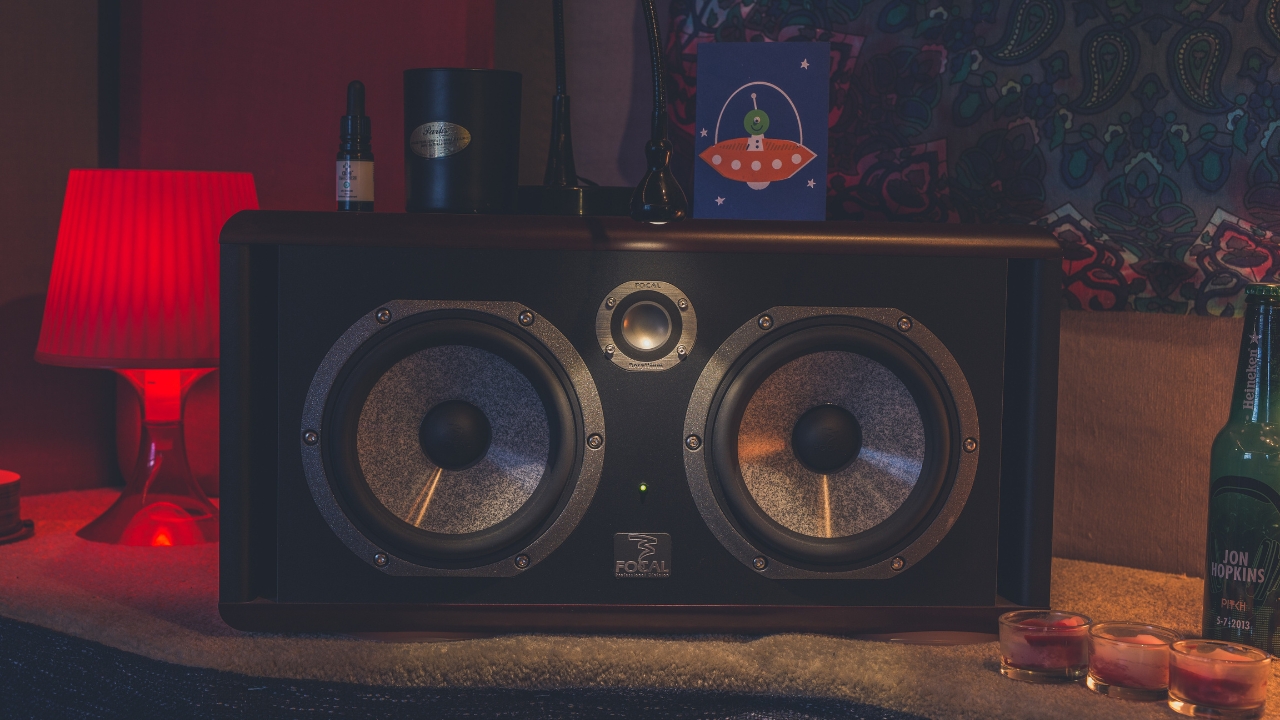
If you're buying some studio monitors for the first time, there's a lot more to consider than just the price. Getting a great sound for your mixes is more than just the monitors you've got, you also need to think about the room that you're mixing in, where you place them, and the ability of your ear to pick out problem frequencies.
The following steps are all necessary for you to consider when you're buying a set of studio monitors so read carefully, they'll serve you extremely well going forward.
1. Consider your space
MusicRadar's got your back
More important than the studio monitors you eventually pick, the room you're mixing in plays a massive part in the sounds you hear when mixing. This is because sound bounces around the room when you're listening to your speakers, which in an untreated room can mask certain frequencies and give you an inaccurate picture of the actual sound.
It's often said that if you have a budget for a studio, you should spend the majority of that on room treatment and leave just a small amount for the studio monitors you want, and I wouldn't disagree with that. Things like acoustic panels, bass traps, and sound diffusers will make a massive difference to your mixes.
2. Monitor size
Picking the right size monitor for your space is also critical. Too big and you'll overpower a small space with low-end frequencies, too small and you'll fail to fill the room. Typically, for the average home studio, a 5-inch studio monitor should be the best size. This is especially true if you're in an untreated room, as you'll prevent excess low-end clouding your mix.
Of course, if you find yourself in a larger room, you may find that a 5-inch speaker is underpowered, so have a look at a larger speaker. Likewise if your space is well-treated, then a bigger speaker will give you more low-end response, which will give you more control over your mixes.
3. Speaker placement
To get the best out of your studio monitors, they need to be in the perfect place. This means getting them in an equilateral triangle with your listening position, and placing them away from any corners in the room where possible.
You'll probably need stands of some sort too, whether that's ones that sit on your desktop, or the type that go behind your desk on the floor. Raising studio monitors up to your ear level is crucial to getting a great listening position, and it also separates them from the desk and prevents any sympathetic resonances building up there.
You'll also want to look at some acoustic foam to separate the monitors from the stands themselves. They can play the dual job of raising them up to the correct height (the tweeters should be at the same height as your ears) as well as helping isolate them from the stands.
3. Connection options
Most monitors feature either an XLR or 1/4-inch jack input, and you'll need a set of balanced cables to get the best quality sound from your audio interface. Your audio interface, on the other hand, is likely to have a 1/4-inch output, so if you're wanting to connect your studio monitors, you may need a 1/4-inch to XLR cable.
This will vary between different monitors and audio interfaces, so make sure to do your due diligence and check this out before you buy. Otherwise, you might end up disappointed when you finally come to plug them in.
FAQs
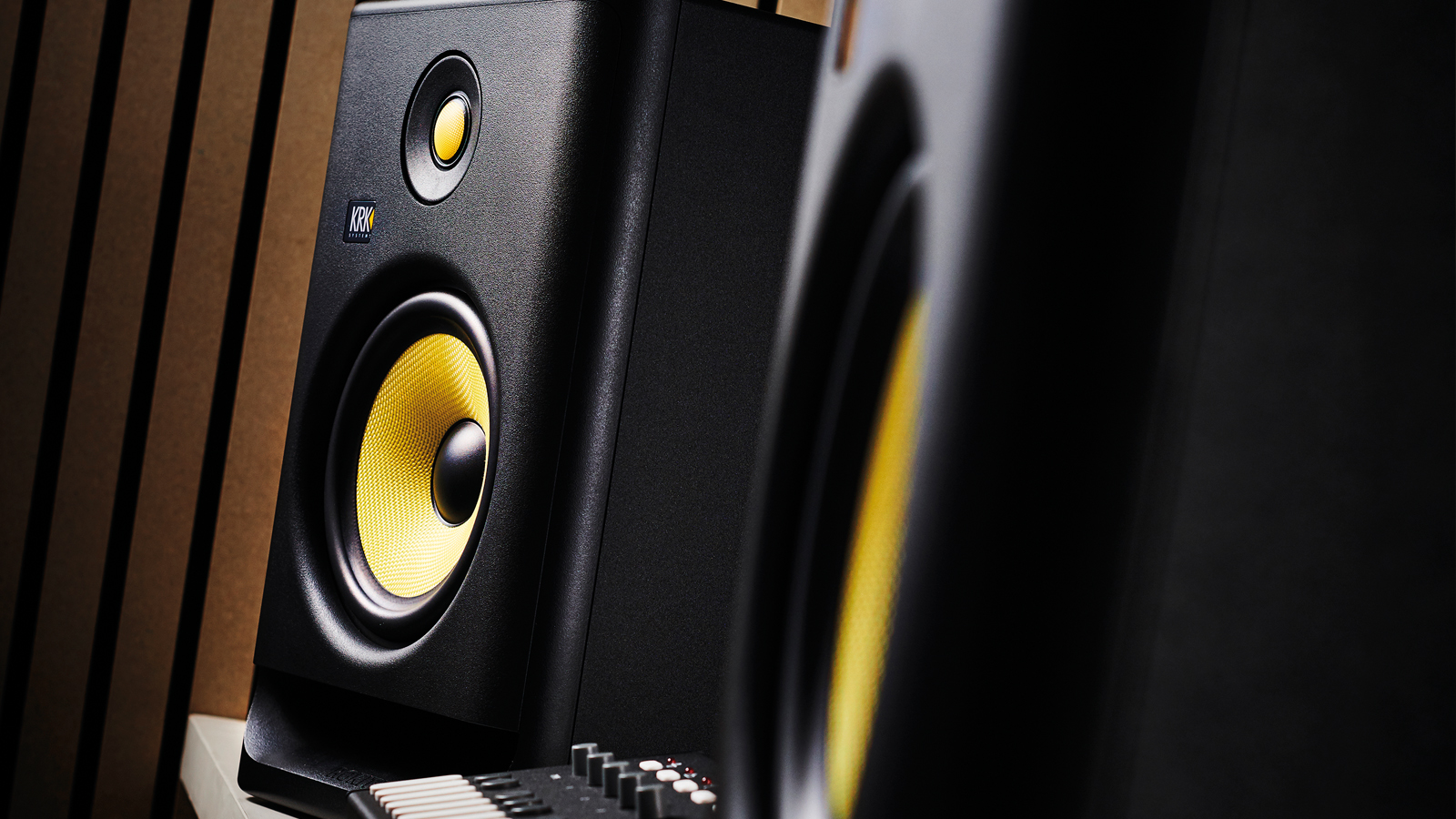
Is it worth getting studio monitors?
If you're serious about creating great quality mixes, then I'd definitely advise getting yourself a set of studio monitors. Studio monitors are what the majority of pro-mixers use to craft their music, and should be a core part of any mixing engineer's arsenal.
What is the 38 rule for studio monitors?
Although it shouldn't be taken as an all-encompassing rule, the 38 rule is the idea that in a room that is a rectangle, the ideal position for your listening should 38% away from the shortest wall. Of course you should never take this for granted in your own space without conducting your own measurements, but on the face of it it's pretty sound advice.
What is the disadvantage of studio monitors?
There are a few disadvantages to using studio monitors. They often lack in the low end depending on the size, with studio headphones being a better option for hearing the detail of the lows. They also have a narrow 'sweet spot', which makes it critical to get them in the right listening position.
A pair of studio monitors is also only ever going to be as good as your room treatment, so their performance is very dependent on where you're listening to them. Finally, they're pretty expensive, so can often be out of reach for newer and younger musicians.
Is it OK to leave studio monitors on all the time?
I'd advise that you don't do this. Although the on/off cycle can be hard on components, so long as you're not doing it every five minutes you shouldn't have any major issues. As well as you saving money on your electricity bill, you'll also prevent heat build up which could potentially damage your monitors in the long run.
I tend to turn mine on at the start of the day and turn them off at the end of the day. I've been using mine for eight years now like this and not run into any problems!
Do I need 1 or 2 studio monitors?
Ideally you'll want two studio monitors if you want to execute stereo mixes. You could potentially use a single studio monitor for tasks where you don't necessarily need stereo compatability, like monitoring amp modellers, for example. To be honest I can't really think of many other examples where a single monitor would be better than two.
Should studio monitors be against a wall?
This depends on the design of the monitor in question. In an ideal world you'd never have your studio monitors up against a wall, but it's often not possible in the modern living space. If you have a front ported monitor, then you can place them against a wall without any disastrous results, but rear ported speakers may suffer being placed too close to a wall.
Why do people put studio monitors sideways?
The only time you should really need to put your monitors sideways is if your stands are too tall. You'll often see this in pro-studios because they'll be placed on top of the desk, which is typically pretty tall. This also gets them out of the way of any other monitoring that might be in the studio.
Doing this massively narrows the sweet spot, and can cause some serious comb filtering issues though. Do yourself a favour, unless you're a professional mix engineer, keep those monitors upright.
Do I need an amplifier for my studio monitors?
The electrical signals coming out of a home studio mixer or audio interface are fairly weak, which means monitors need the help of an amplifier. That amplifier can either be incorporated within the speaker itself - something you’ll find in active monitors - or used separately and externally, alongside passive speakers. Most studio monitors you’ll come across are active, but there are a great many passive speakers too, some of which are world-renowned. Try Yamaha’s long-discontinued NS-10s, for example, which are sought-after for their unpleasant, abrasive reediness.
How do I connect my studio monitors to my computer or interface?
If you opt for active monitors, they usually feature jack, XLR, phono, digital and/or USB connections, which are designed to be hooked straight into your audio interface or computer. If your interface has balanced outputs, opt for your monitors’ balanced XLR or jack input to reduce unwanted noise. When working with passive monitors, you’ll need to send your interface or computer output to their corresponding external amplifier.
Read more: How to connect studio monitors to your audio interface
Key terms
If you're confused about some of the terms being used in this guide, I've put together all the related studio monitor lingo with clear explanations for you here:
- Active - An active studio monitor has a built-in power supply and requires its own power. Most modern monitors are active.
- Balanced input - A balanced input helps reduce any unwanted noise. On studio monitors, these are XLR or TRS connectors.
- Bi-Amped - This refers to the number of amplifiers built into the studio monitor, with some monitors having separate amps for the woofer and tweeter.
- Boomy - A colloquial term for overpowering bass, usually as a result of poor room treatment.
- Boundary interference - This is what happens when you place a studio monitor too close to a wall, resulting in unnatural bass buildup.
- Boxy - Another colloquial term typically used to describe a 'hollow' sound, due to lack of midrange.
- Crossover - This is the point where the frequencies of the woofer and tweeter split.
- Decoupling - The act of isolating your studio monitors from your desktop or studio monitor sounds. Crucial for getting a good mix.
- Digital Signal Processing (DSP) - In studio monitors, this typically refers to built-in processing for EQ, phase, or room compensation.
- Farfield - Large monitors typically built into the walls of professional studios.
- Fatiguing - A colloquial term for the sound of a studio monitor or mix that has too much high-end.
- Frequency response - The range of frequencies a studio monitor is capable of producing, measured in Hz and kHz.
- Honky - Another colloquial term to refer to a nasal, mid-heavy sound in a studio monitor or mix.
- Hyped - Used to refer to studio monitors that purposely enhance certain frequencies.
- Midfield - A medium-sized monitor, usually found in professional studios.
- Nearfield - A smaller-sized studio monitor. The majority of the studio monitors in this guide are nearfields.
- Phase coherence - The difference in time it takes for the sound of each speaker to reach your ears.
- Ported (bass reflex) - A type of monitor that features a vent or port to enhance the low-end.
- Room correction - Controls found on a lot of studio monitors that allow you to adjust the high or low frequencies to compensate for the sound of your room.
- Room modes - Frequencies that resonate due to the size and shape of your room. These can often cloud the low-end.
- Soundstage - A word to describe the stereo spread of a studio monitor.
- Transient response - How quickly a studio monitor reacts to transient sounds like snare and kick drums.
- Tweeter - The small speaker on your studio monitors, responsible for high-end frequencies.
- Woofer - The larger speaker on your studio monitors, responsible for lower frequencies.
Why trust us
✔️ Over 150 studio monitors tested
✔️More than 9,500 reviews on-site
✔️17 years of product testing
Since 2007 MusicRadar has been helping musicians of all kinds, whether they're guitarists, drummers, producers, keyboard players, or DJs. We've been testing music gear for a long time, and our team of highly experienced industry professionals collectively have over a century's worth of knowledge from real-world music-making.
MusicRadar has been the go-to place for musicians looking for the latest news, best gear reviews, and how-tos for 17 years and counting, irrespective of your particular instrument, or favourite music genre.
As well as providing the best online music content, MusicRadar also hosts content from stalwart magazine brands including Future Music, Computer Music, and eMusician. We receive three million visitors per month, making us the preeminent destination for music makers and lovers worldwide.
Meet the experts
Our writing team consists of real-life musicians with a huge amount of collective experience. Meet our expert team of gear reviewers:

Matt has been recording bands since the mid-noughties, cutting his teeth with an M-Audio M-Track 2 and a copy of Cubase on Windows XP. Since then he's used countless audio interfaces to record music for bands across the UK, covering everything from djent to jazz. As a MusicRadar writer, Matt has reviewed over 50 different products in the last year, including audio interfaces, guitars, amps, and pedals. Before becoming a writer, he spent five years in the music retail industry working for Dawsons Music and Northwest Guitars, providing expert advice to musicians. He’s currently studying Music Production at Spirit Studios in Manchester, UK.

Andy is an expert on music production and technology having started out writing for Music Technology magazine in 1992. He has been an editor for Future Music, Keyboard Review, MusicTech, and Computer Music, which he helped launch in 1998. He regularly reviews gear for MusicRadar, ranging from the best studio monitors and synthesizers to pro studio hardware and software.

Si takes care of the reviews on MusicRadar and Future Music magazine, although you may have also spotted him on camera conducting gear reviews for the MusicRadar YouTube channel. As well as making sure our writing team have the latest gear for review, he's been regularly testing instruments and accessories for well over 15 years, putting studio monitors, studio headphones, synthesizers, laptops, and much more through their paces.

Jon is a London-based platinum award-winning mixer, producer, composer, and club remixer with a diverse CV that spans dance, pop, rock, and music for media. He’s also a long-term contributor to MusicRadar's music technology reviews, with a huge amount of experience reviewing studio monitors. Whether working alone or collaborating he usually handles final mixdowns, so you’ll also find MusicRadar peppered with his handy mixing tips.
How we test
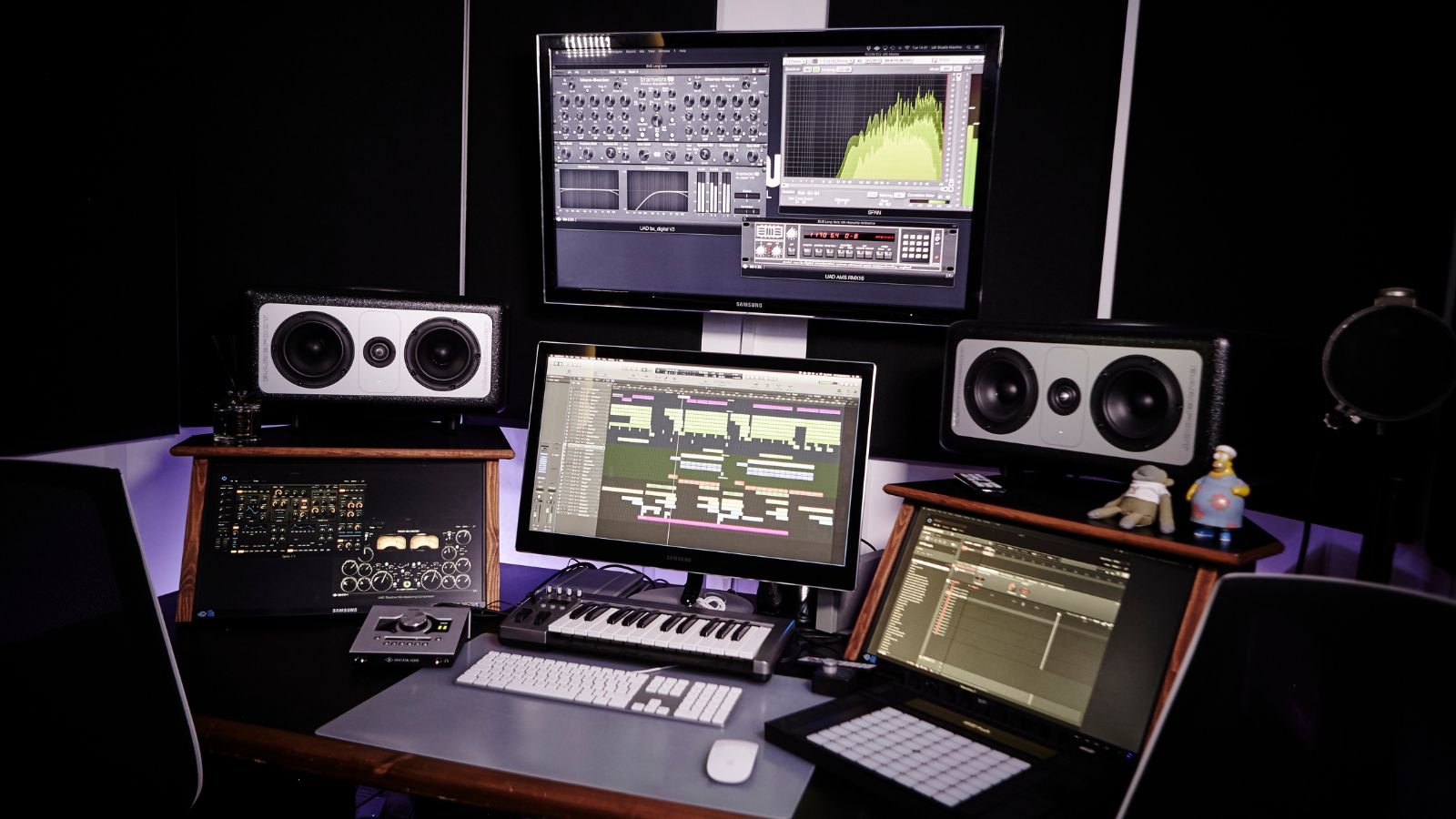
Studio monitors should reveal everything about your music in as truthful a way as possible. They should therefore have a completely flat frequency response, that is not coloured or enhanced in any area, so what you hear being played is the actual mix in all its glory. You can then make correct mix decisions based on this true response (reduce volume levels, or EQ certain parts, for example). If your studio monitors don't have a flat frequency response and are, say, enhanced at the bass end, you will hear too much bass so reduce it while mixing and your mixed track will sound bass light on any other playback system.
The wider the quoted frequency response the better, as the speakers will deliver all the highs and lows you will expect from your music. While this can be tested electronically, another option is to test studio monitors with reference music – our own trusted mixes of music that we know very well – where we can tell if any areas of the frequency spectrum have been enhanced or reduced. Hearing every detail in a well known mix is the target for a great set of studio monitors.
During our playback tests we also test speaker design elements like bass ports which reduce low end distortion, and the rigidity of the cabinets which can help deliver tight transients or, if less well constructed, more flabby playback responses.
At this stage we also test for the stereo width of the monitors – how well spread the stereo signal is between left and right speaker – and also the 'sweet spot'. This is the ideal listening position to enjoy the best sound from the speakers and the better studio monitors feature design elements to increase the size of this sweet spot. This means you aren't so limited in your listening position or can have more than one person monitoring a mix at the same time.
Read more about how we test music making gear and services at MusicRadar.
Latest updates
Recent updates
26/03/25: We've added a new product, the KRK Rokit 5 G5, to the guide. We've also included a brand new how-to-choose section, a glossary of key terms, and a why trust us section. We've completely overhauled our FAQ section to make it more useful, and each product entry has been extended with insight from our expert reviewers
27/11/24: We've cut down our top picks to make it easier to navigate. Two brand-new releases have been added as well as spec comparison table to allow easy comparisons between the different studio monitors in the guide. Our buying advice has also been updated for clarity.
21/03/24: We further improved the navigation of the page, adding more categories catered towards different use cases. Certain entries have moved to a new 'also tested' section. We've removed any additional text that didn't contribute directly to the products and added two new products, the JBL 305P MKII, and Kali Audio LP-6 studio monitors.
Related buyer's guides
- Produce for less with the best budget studio monitors
- Our pick of the best small studio monitors for compact studios
- The best audio interfaces you can buy right now
- The best studio headphones for music production
- Explore the best laptops for music production
- Prefer a desktop? These are the best PCs for music production
Get the MusicRadar Newsletter
Want all the hottest music and gear news, reviews, deals, features and more, direct to your inbox? Sign up here.
Andy has been writing about music production and technology for 30 years having started out on Music Technology magazine back in 1992. He has edited the magazines Future Music, Keyboard Review, MusicTech and Computer Music, which he helped launch back in 1998. He owns way too many synthesizers.
- Daryl RobertsonSenior Deals Writer
- James GrimshawFreelance writer
- Matt McCrackenJunior Deals Writer
- Chris Corfield
